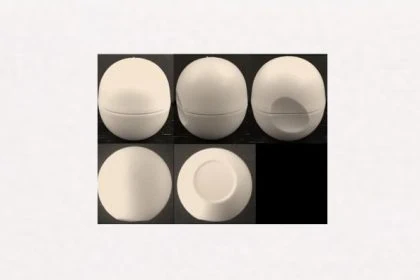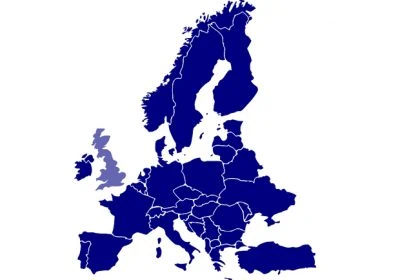1 May 2021, the Trade and Cooperation Agreement (TCA) between the EU and the UK enters into force; IP protection is even listed as a separate sub-chapter. So everything is settled? There is light and shadow.

The Trade and Cooperation Agreement (TCA) between the EU and the UK is intended to put an end to Brexit and at the same time provide a reliable legal framework for trade and cooperation relations. It has already been provisionally applied since 1 January because there was no time for ratification after the long Brexit negotiations. This has now been made up for, and on Tuesday the TCA was officially ratified by the European Parliament. It will enter into force 1 May 2021.
The second part of the TCA contains a separate subchapter on industrial property rights (IP protection). On the positive side, both the EU and the UK are committed to high standards for the protection and enforcement of IP rights, and compliance with fundamental international treaties of modern IP law is also confirmed by both sides. These include TRIPS, the Paris Convention, the Berne Convention, the WIPO Copyright Treaty and the Protocol to the Madrid Agreement.
Trademarks and designs in the TCA
Fortunately, there is therefore much agreement and equal treatment in the EU and the UK for both trademarks and designs. After all, these two areas of law have long been shaped by the international treaties of which the UK is still a member. In addition, the UK offered uncomplicated “cloning” of EU trademarks and EU designs in the transitional period before Brexit. Any owner of an EU trade mark or community design could apply for (and pay for) an identical UK trademark or design, which automatically took over the priority and term of the EU counterpart.
However, there is one area not clarified by the TCA that is also important with regard to trademarks and designs: that is the exhaustion of IP rights. Unfortunately, the question of exhaustion of IP rights was explicitly excluded from regulation in the TCA.
Cross-border aspects are unresolved
After all, exhaustion concerns cross-border aspects, and these are still a bone of contention between the EU and the UK anyway – despite the TCA. With regard to IP protection, there is potential for conflict in relation to exhaustion, but also in relation to lis pendens or mutual exceptions to the provision of security for legal costs. And even aspects that appear to be clarified are not so on closer inspection.
Preservation of evidence and disclosure
This becomes clear when it comes to preserving evidence. In terms of civil procedure, both sides are committed to providing methods for clarifying the facts and preserving evidence. De facto, however, the range of national measures is wide and not even uniform within the EU. For example, “discovery” in the UK is considered comprehensive, the saisie-contrefaçon in France is a special sharp sword, while Germany relies on a national limited and independent evidence procedure.
Incidentally, there is also no provision in the TCA for territorial disclosure obligations for the creation of unregistered Community designs and supplementary unregistered design rights, which are possible in the UK.
Dispute settlement mechanism
Ultimately, much will depend on how the planned dispute settlement mechanism mentioned in the TCA will work in practice. The potential conflict is already apparent in this; there are few things on which the British seem to be as united as they are in their delight at the detachment from the ECJ as a supervisory authority for interpreting and enforcing cross-border regulations. Accordingly, instead of the ECJ, an exclusive dispute settlement mechanism is agreed, set out in Part six of the agreement (“Part six: Dispute settlement and horizontal provisions”).
Inevitably, therefore, EU and UK laws will diverge in the coming months, as the UK will not implement several important EU directives. To take just one example from IP protection, laws in important areas such as supplementary protection certificates in medicine and regulatory rights could become increasingly divergent.
Moreover, the TCA does not regulate jurisdiction and enforcement of judgments. The UK has already stated that until the UK accedes to the Lugano Convention, UK law will govern cross-border patent litigation and the recognition of judgments.
Patents
But let’s take a closer look at the area of patents. In the area of patents, the opinion is that nothing will change as a result of Brexit, because the European patent – contrary to what its name suggests – is not a Union patent, but is governed by the regulations of the independent international organisation EPO. Ultimately, one applies for a European patent in the EPO member states via the EPO, but has to validate it nationally. And this will not change as a result of Brexit.
The long-standing efforts to introduce a real European unitary patent failed for a long time due to national ratifications both in the UK and, above all, in Germany. Then, last year, the UK withdrew from the unitary patent; its future has been quiet ever since.
But patents also include patents in the pharmaceutical and medical fields, and this is where the UK and the EU may diverge in the future. For in relation to SPC, the TCA provides that the EU and UK must provide further protection for patented products to compensate the owner for any reduction in protection caused by an administrative procedure (such as obtaining a marketing authorisation). In principle, however, the UK can change the rules for supplementary protection certificates (SPCs).
Geographically protected indications
Another area of IP protection concerns geographically protected indications, which can be used to protect high-quality regional foodstuffs in particular. Accordingly, this topic is often emotionally charged – and the TCA shines here with a regulatory gap. No agreement was reached on the mutual protection and enforcement of future geographical indications. The rule that the UK recognised EU protection for geographical products, which was still valid for the transitional period, cannot be applied to new applications for protection.
Interim relief and damages
However, the area of interim relief and damages shows what is possible with a common will. It is desired by both sides that interim relief. injunctions and damages can be ordered. Until now, this was regulated by the Enforcement Directive (Directive 2004/48/EC). And although this Directive no longer applies to the UK, its rules and system have been adopted almost identically in the UK. Thus, the TCA provides that the UK will retain damages in the style of the Enforcement Directive (including for “intentionally infringement”).
The UK has also agreed that the retained EU law will be interpreted in accordance with the retained EU case law unless and until the case law is overturned or the law is changed. The hope remains that the parties will not dispute whether the retained EU case law applies to a particular scenario…
Do you need legal representation and advice for IP rights?
Our lawyers have many years of expertise in the entire field of intellectual property and are entitled to represent you before any court – in Germany and internationally.
Please feel free to contact us if you are interested.
Sources:
Image:
TheDigitalArtist | pixabay.com | CCO License








Leave a Reply